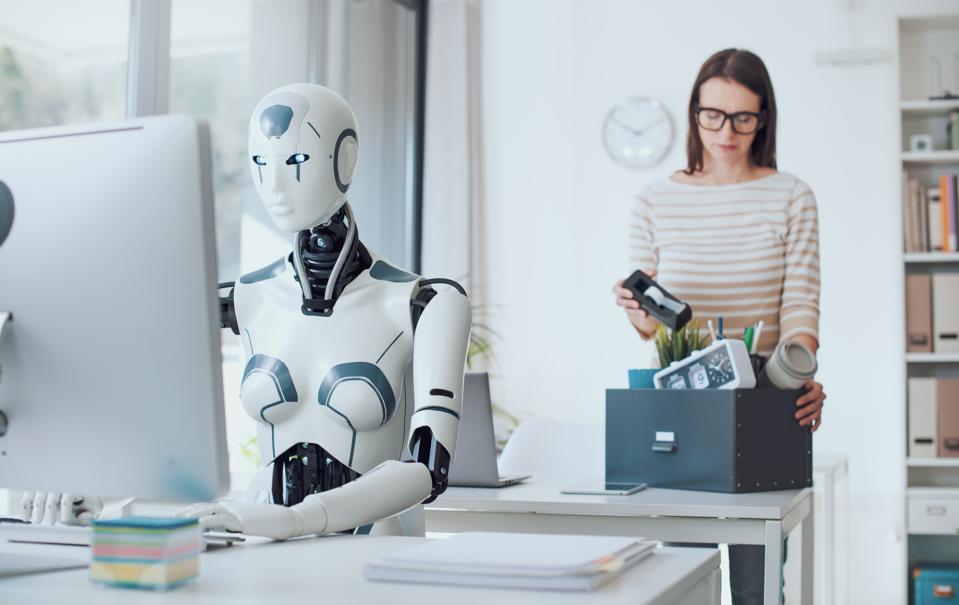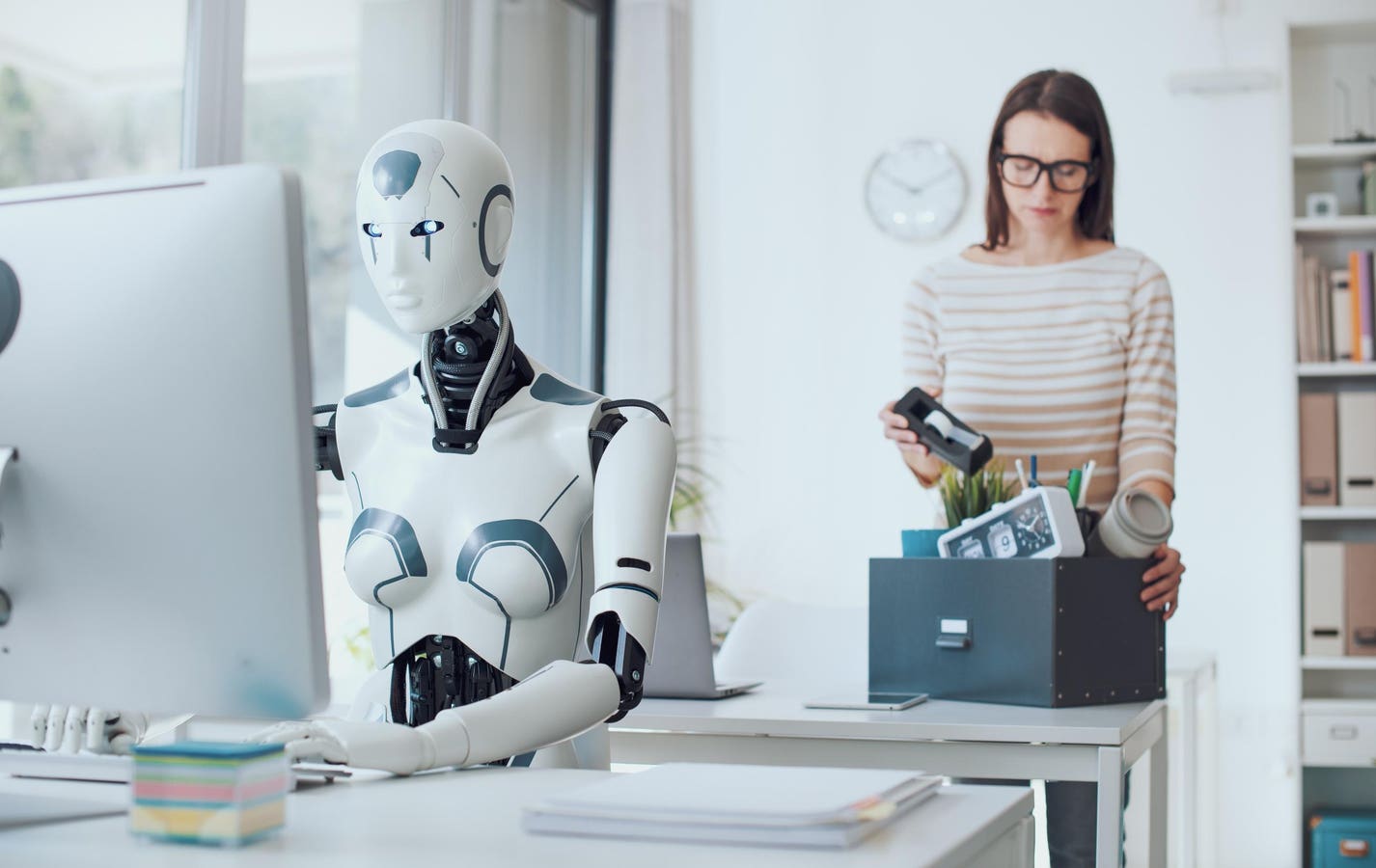
Microsoft research shows which roles are AI-safe jobs and which face the greatest risk as AI advances.
getty
Think your job is at risk from AI? You’re not alone. As artificial intelligence sweeps across every industry, even experts are rethinking what qualifies as “AI-safe jobs.” Microsoft’s latest research delivers a reality check—and a few shocks. From healthcare to creative fields, the company’s new report reveals which jobs are most protected, which are most at risk and why the answers aren’t always what you expect.
What Are ‘AI-Safe’ Jobs?
AI-safe jobs are least likely to be replaced or fundamentally transformed by generative AI. These roles typically require physical presence, manual dexterity, human interaction or specialized skills that current AI tools can’t replicate effectively.
How Did Microsoft Measure AI Impact?
Microsoft introduced an “AI applicability score” for each occupation by matching user conversations with Copilot to measures of task success and scope of automation. This score reflects real-world usage rather than theoretical task analysis.
How This Study Differs From Past Research
Microsoft’s approach differs from studies like OpenAI’s “GPTs are GPTs”. Instead of expert predictions, this research tracks actual AI usage in workplaces. While OpenAI estimated that 80% of the U.S. workforce could see at least 10% of tasks affected, Microsoft’s data highlights clear winners and losers based on how workers really use artificial intelligence.
Top 10 Jobs Facing The Highest AI Disruption
Here are the top 10 occupations most impacted by generative AI today:
Interpreters and Translators
Historians
Passenger Attendants
Sales Representatives of Services
Writers and Authors
Customer Service Representatives
CNC Tool Programmers
Telephone Operators
Ticket Agents and Travel Clerks
Broadcast Announcers and Radio DJs
Read on for all 40 roles facing significant AI disruption below.
Why These Roles Are Vulnerable to AI
Jobs on the high-impact list share these traits:
Heavy reliance on information processing and communication
Tasks involving data analysis, content creation or answering questions
Digital task completion that does not require physical presence
Functions that can often be performed remotely
Top 10 Jobs Safe From Generative AI
At the opposite end of the spectrum, the research from Microsoft identifies jobs that remain largely insulated from AI disruption:
Phlebotomists
Nursing Assistants
Hazardous Materials Removal Workers
Helpers—Painters, Plasterers, etc.
Embalmers
Plant and System Operators, All Other
Oral and Maxillofacial Surgeons
Automotive Glass Installers and Repairers
Ship Engineers
Tire Repairers and Changers
Read on for the complete list of 40 AI-safe jobs below.
Why These Roles Are Insulated From AI
AI-safe jobs share these characteristics:
Physical presence and manual dexterity that AI cannot emulate
Human empathy and interaction for patient care or service
Real-world problem solving in unpredictable environments
Specialized training with safety or liability implications
Complex equipment operation requiring real-time judgment
5 AI Trends Reshaping The Workplace
1. High-Skill Jobs Face Greater Exposure
High-education roles such as data scientists, management analysts and web developers rank among the most disrupted.
2. Credentials Don’t Guarantee Job Security
Even highly skilled roles like financial advisors and business analysts are seeing significant impacts from AI.
3. AI Tools Still Have Limits
Only about 60% overlap exists between user expectations and AI capabilities according to the research.
4. AI Augments More Than It Replaces
The study reveals that AI is augmenting work as much as it’s automating it. For example, writers, advisors and service reps use AI for routine tasks while retaining creative or interpersonal work.
5. Physical Jobs Remain Protected
Roles demanding hands-on skills and human connection stay largely insulated.
How To Prepare For AI’s Impact On Your Career
AI’s impact on jobs is more nuanced than many expected. Rather than eliminating roles, artificial intelligence is reshaping how tasks are performed across industries. As the workforce debates which positions qualify as AI-safe jobs and which are most at risk, the best strategy is to stay adaptable and invest in continuous learning. Professionals who thrive will combine in-demand technical skills with human qualities such as creativity, empathy and critical thinking—abilities that artificial intelligence still can’t fully replicate.
40 Jobs Most at Risk from AI
Interpreters and Translators
Historians
Passenger Attendants
Sales Representatives of Services
Writers and Authors
Customer Service Representatives
CNC Tool Programmers
Telephone Operators
Ticket Agents and Travel Clerks
Broadcast Announcers and Radio DJs
Brokerage Clerks
Farm and Home Management Educators
Telemarketers
Concierges
Political Scientists
News Analysts Reporters and Journalists
Mathematicians
Technical Writers
Proofreaders and Copy Markers
Hosts and Hostesses
Editors
Business Teachers Postsecondary
Public Relations Specialists
Demonstrators and Product Promoters
Advertising Sales Agents
New Accounts Clerks
Statistical Assistants
Counter and Rental Clerks
Data Scientists
Personal Financial Advisors
Archivists
Economics Teachers Postsecondary
Web Developers
Management Analysts
Geographers
Models
Market Research Analysts
Public Safety Telecommunicators
Switchboard Operators
Library Science Teachers Postsecondary
40 Jobs Least Impacted by AI
Phlebotomists
Nursing Assistants
Hazardous Materials Removal Workers
Helpers—Painters, Plasterers, etc.
Embalmers
Plant and System Operators All Other
Oral and Maxillofacial Surgeons
Automotive Glass Installers and Repairers
Ship Engineers
Tire Repairers and Changers
Prosthodontists
Helpers—Production Workers
Highway Maintenance Workers
Medical Equipment Preparers
Packaging and Filling Machine Operators
Machine Feeders and Offbearers
Dishwashers
Cement Masons and Concrete Finishers
Supervisors of Firefighters
Industrial Truck and Tractor Operators
Ophthalmic Medical Technicians
Massage Therapists
Surgical Assistants
Tire Builders
Helpers—Roofers
Gas Compressor and Gas Pumping Station Operators
Roofers
Roustabouts Oil and Gas
Maids and Housekeeping Cleaners
Paving Surfacing and Tamping Equipment Operators
Logging Equipment Operators
Motorboat Operators
Orderlies
Floor Sanders and Finishers
Pile Driver Operators
Rail-Track Laying and Maintenance Equipment Operators
Foundry Mold and Coremakers
Water Treatment Plant and System Operators
Bridge and Lock Tenders
Dredge Operators

